Abstract
BACKGROUND. Rhode Island's Division of Substance Abuse asked us to assess the State's drug treatment needs and make recommendations regarding its treatment system for the next three years. METHODS. We used a statewide telephone drug use survey of 5,176 households supplemented by drug-related hospital discharges, Division of Drug Control statistics, and interviews with providers, state officials, and out-of-state experts. Drug abuse was measured with items from the Diagnostic Interview Schedule. Abusers were asked if they were receiving or wanted to receive treatment. RESULTS. Survey responses, used to estimate the unmet need for drug treatment, indicated a need to triple drug treatment services. Regression models using survey data indicated that the treatment network was overly centralized in the Providence area. Interviews with state officials, clinicians, and out-of-state experts provided material for recommendations on reimbursement policy, treatment mix, quality assurance, and cost containment. CONCLUSIONS. The RI Department of Health's certificate-of-need program adopted our overall recommendation for tripling the drug treatment system as its guideline in evaluating proposals for new treatment facilities. With State funding of a new adolescent center and expansion of outpatient slots in the private sector, this recommendation has now been fully implemented.
Full text
PDF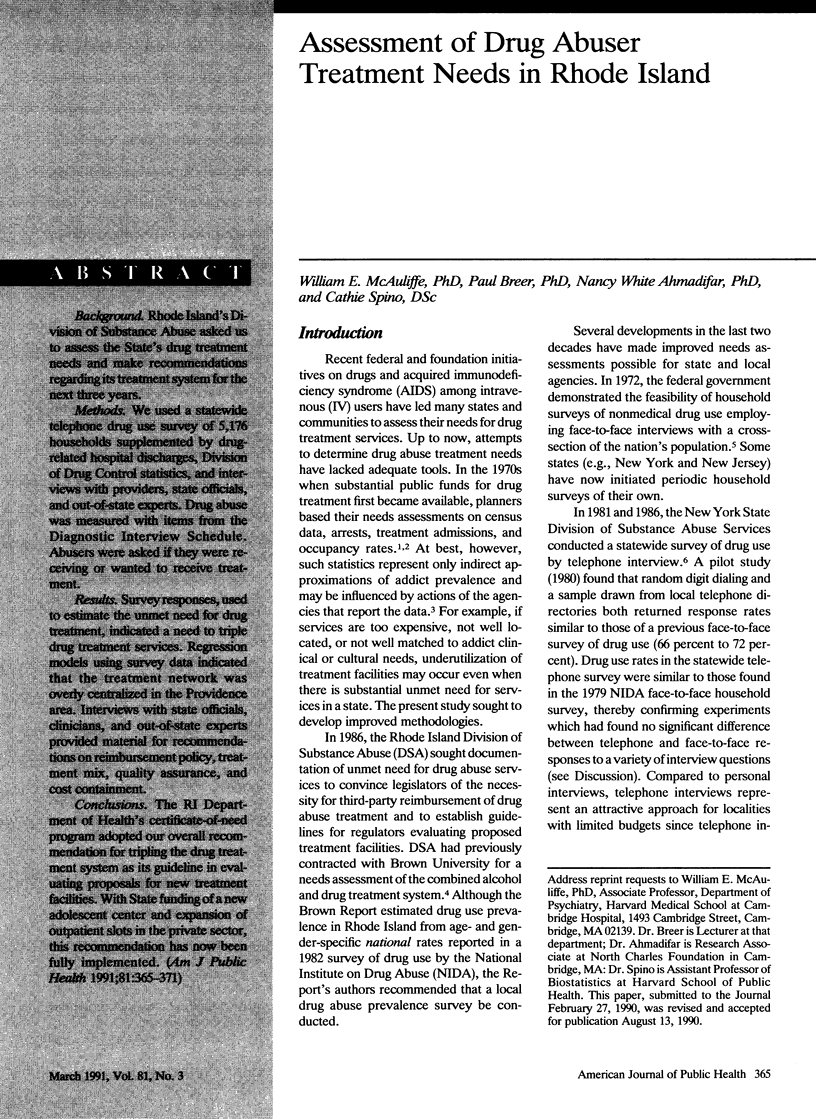
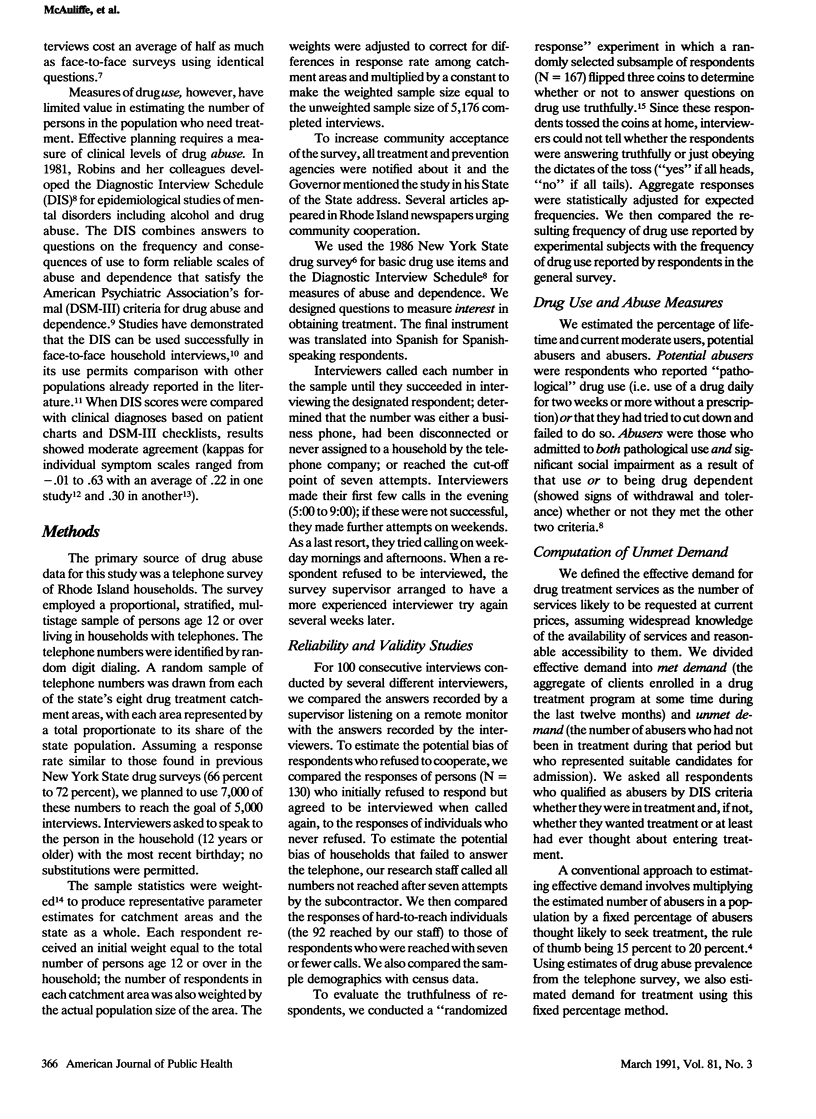
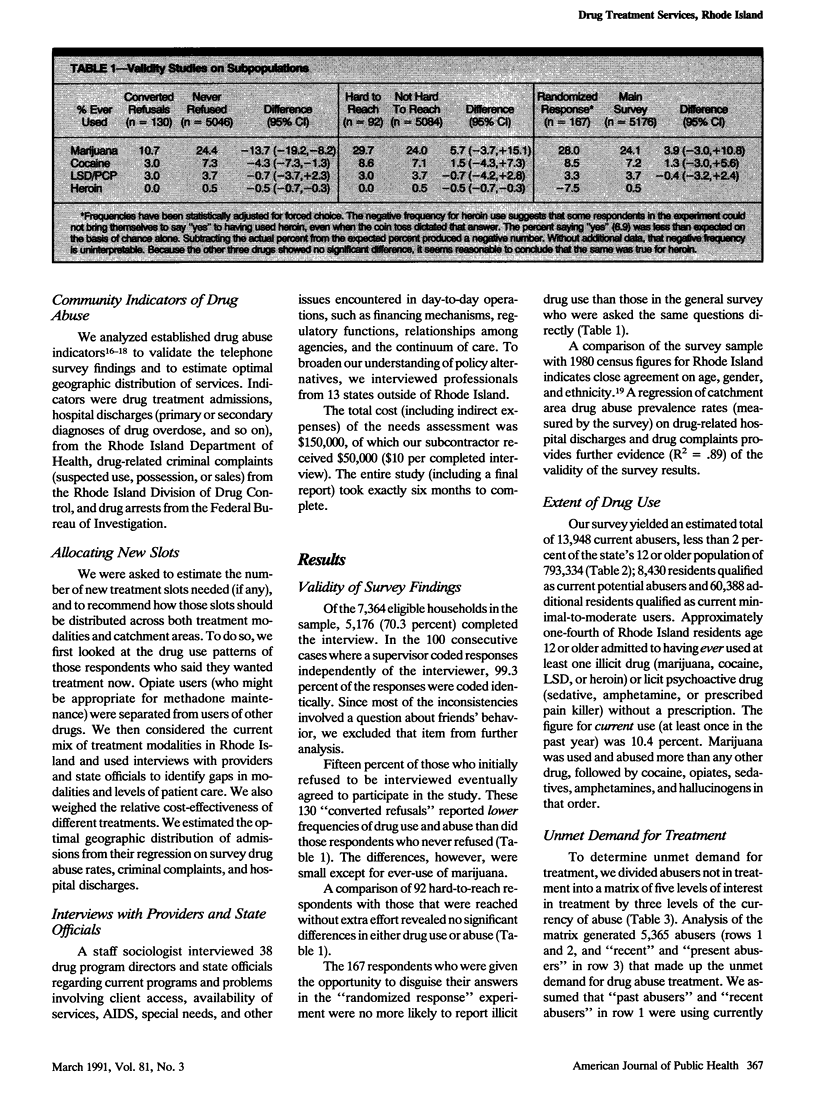
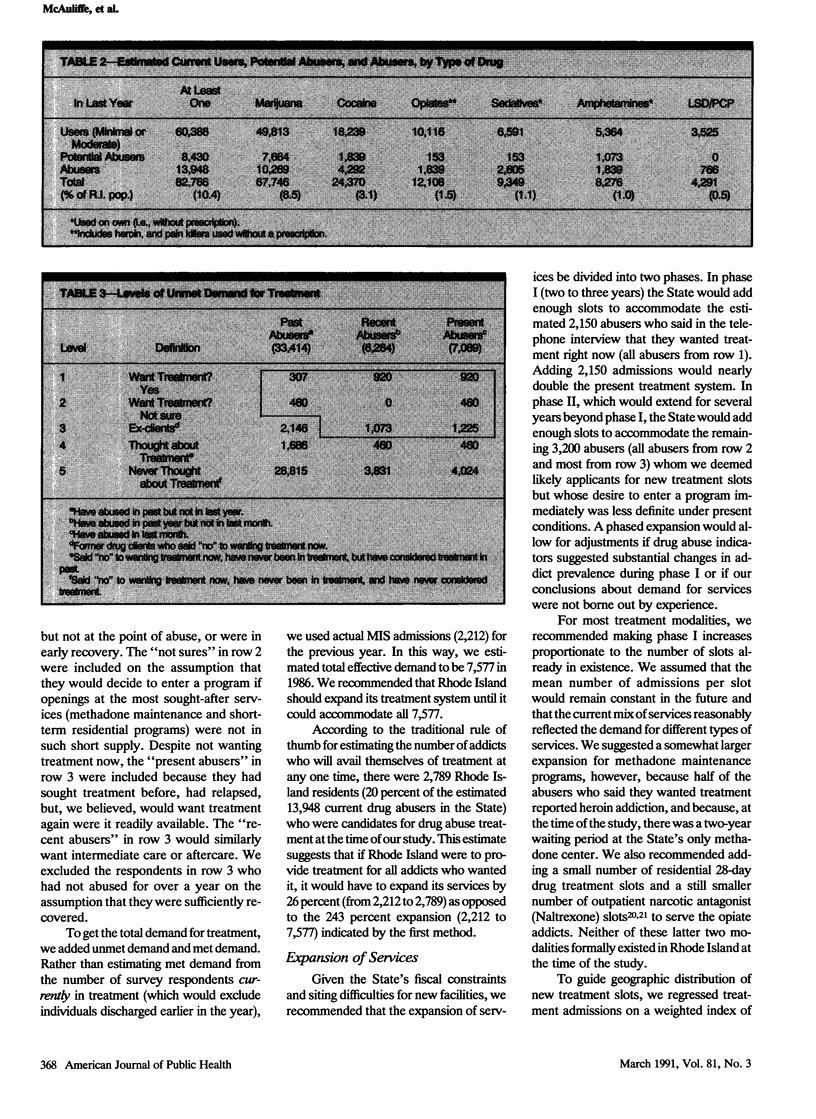
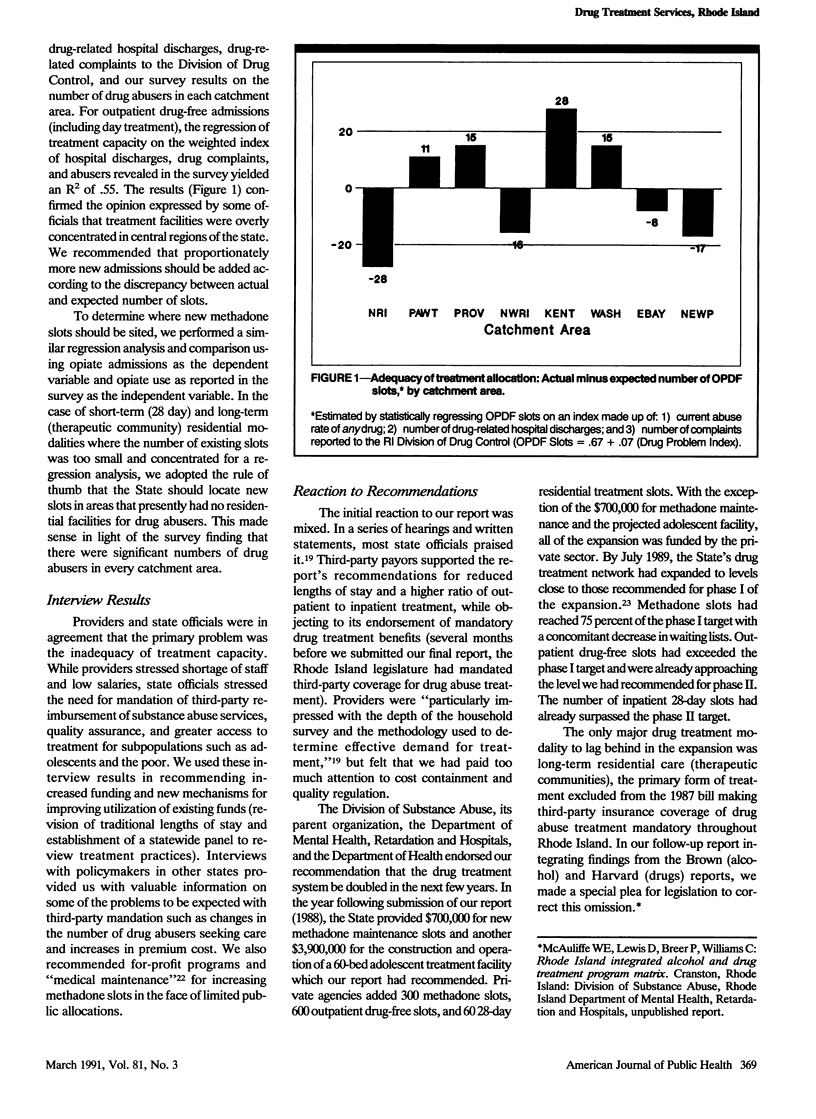
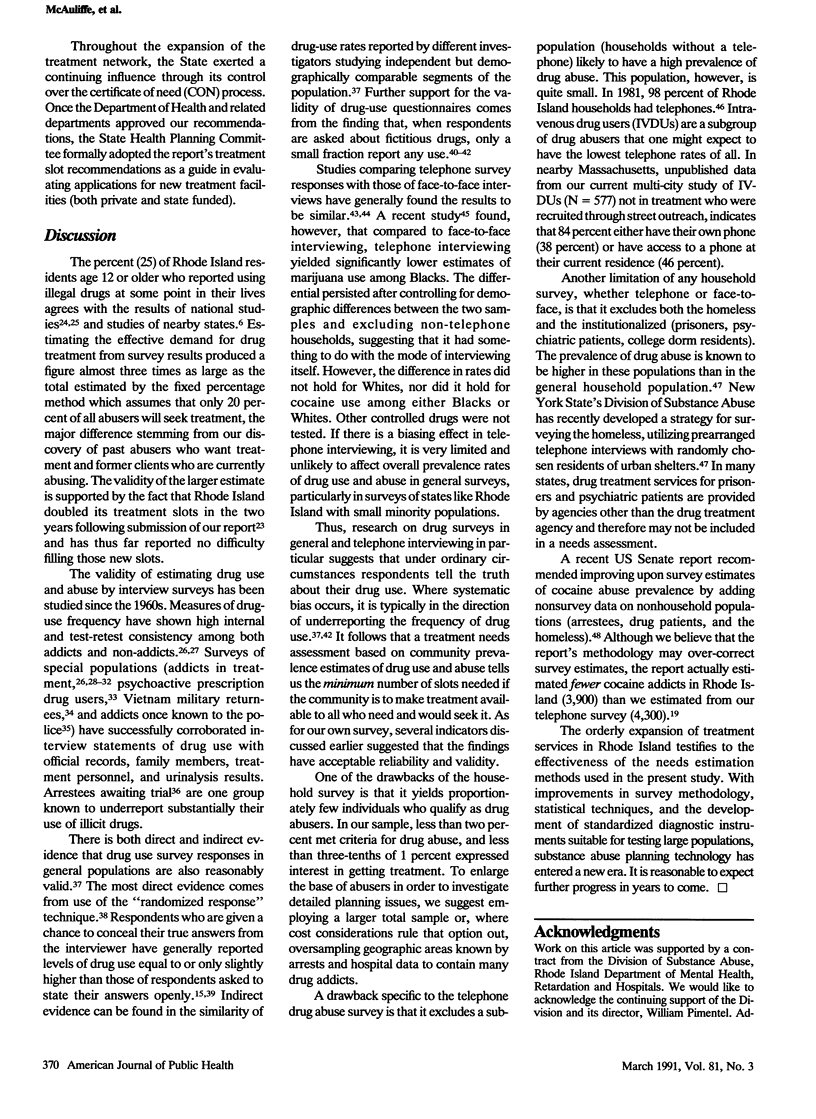
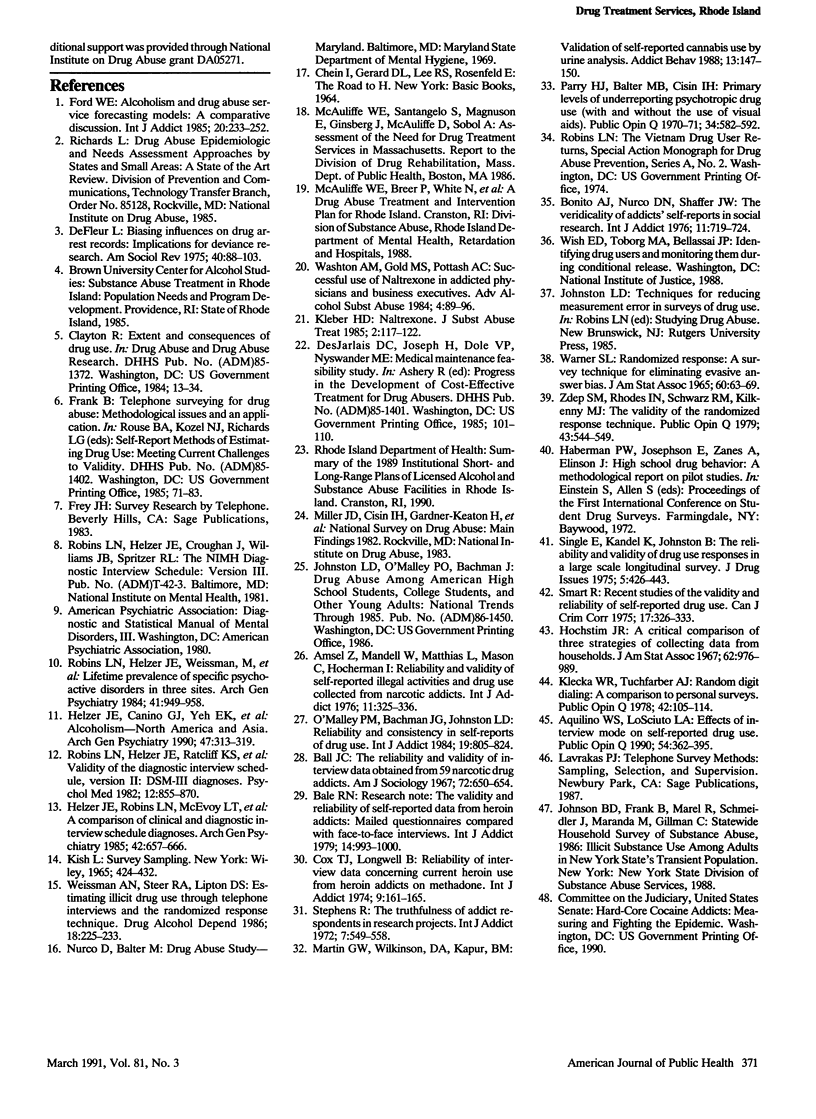
Selected References
These references are in PubMed. This may not be the complete list of references from this article.
- Amsel Z., Mandell W., Matthias L., Mason C., Hocherman I. Reliability and validity of self-reported illegal activities and drug use collected from narcotic addicts. Int J Addict. 1976;11(2):325–336. doi: 10.3109/10826087609058803. [DOI] [PubMed] [Google Scholar]
- Bale R. N. The validity and reliability of self-reported data from heroin addicts: mailed questionnaires compared with face-to-face interviews. Int J Addict. 1979 Oct;14(7):993–1000. doi: 10.3109/10826087909073942. [DOI] [PubMed] [Google Scholar]
- Bonito A. J., Nurco D. N., Shaffer J. W. The veridicality of addicts' self-reports in social research. Int J Addict. 1976;11(5):719–724. doi: 10.3109/10826087609058808. [DOI] [PubMed] [Google Scholar]
- Cox T. J., Longwell B. Reliability of interview data concerning current heroin use from heroin addicts on methadone. Int J Addict. 1974;9(1):161–165. doi: 10.3109/10826087409046778. [DOI] [PubMed] [Google Scholar]
- DeFleur L. B. Biasing influences on drug arrest records: implications for deviance research. Am Sociol Rev. 1975 Feb;40(1):88–103. [PubMed] [Google Scholar]
- Ford W. E. Alcoholism and drug abuse service forecasting models: a comparative discussion. Int J Addict. 1985 Feb;20(2):233–252. doi: 10.3109/10826088509044908. [DOI] [PubMed] [Google Scholar]
- Helzer J. E., Canino G. J., Yeh E. K., Bland R. C., Lee C. K., Hwu H. G., Newman S. Alcoholism--North America and Asia. A comparison of population surveys with the Diagnostic Interview Schedule. Arch Gen Psychiatry. 1990 Apr;47(4):313–319. doi: 10.1001/archpsyc.1990.01810160013002. [DOI] [PubMed] [Google Scholar]
- Helzer J. E., Robins L. N., McEvoy L. T., Spitznagel E. L., Stoltzman R. K., Farmer A., Brockington I. F. A comparison of clinical and diagnostic interview schedule diagnoses. Physician reexamination of lay-interviewed cases in the general population. Arch Gen Psychiatry. 1985 Jul;42(7):657–666. doi: 10.1001/archpsyc.1985.01790300019003. [DOI] [PubMed] [Google Scholar]
- Kleber H. D. Naltrexone. J Subst Abuse Treat. 1985;2(2):117–122. doi: 10.1016/0740-5472(85)90036-4. [DOI] [PubMed] [Google Scholar]
- Martin G. W., Wilkinson D. A., Kapur B. M. Validation of self-reported cannabis use by urine analysis. Addict Behav. 1988;13(2):147–150. doi: 10.1016/0306-4603(88)90004-4. [DOI] [PubMed] [Google Scholar]
- Preston C. A., Viney L. L. Self- and ideal-self-perception of drug addicts in therapeutic communities. Int J Addict. 1984 Nov;19(7):805–818. doi: 10.3109/10826088409057224. [DOI] [PubMed] [Google Scholar]
- Robins L. N., Helzer J. E., Ratcliff K. S., Seyfried W. Validity of the diagnostic interview schedule, version II: DSM-III diagnoses. Psychol Med. 1982 Nov;12(4):855–870. doi: 10.1017/s0033291700049151. [DOI] [PubMed] [Google Scholar]
- Robins L. N., Helzer J. E., Weissman M. M., Orvaschel H., Gruenberg E., Burke J. D., Jr, Regier D. A. Lifetime prevalence of specific psychiatric disorders in three sites. Arch Gen Psychiatry. 1984 Oct;41(10):949–958. doi: 10.1001/archpsyc.1984.01790210031005. [DOI] [PubMed] [Google Scholar]
- Stephens R. The truthfulness of addict respondents in research projects. Int J Addict. 1972;7(3):549–558. doi: 10.3109/10826087209028107. [DOI] [PubMed] [Google Scholar]
- Warner S. L. Randomized response: a survey technique for eliminating evasive answer bias. J Am Stat Assoc. 1965 Mar;60(309):63–66. [PubMed] [Google Scholar]
- Washton A. M., Gold M. S., Pottash A. C. Successful use of naltrexone in addicted physicians and business executives. Adv Alcohol Subst Abuse. 1984 Winter;4(2):89–96. doi: 10.1300/J251v04n02_08. [DOI] [PubMed] [Google Scholar]
- Weissman A. N., Steer R. A., Lipton D. S. Estimating illicit drug use through telephone interviews and the randomized response technique. Drug Alcohol Depend. 1986 Nov;18(3):225–233. doi: 10.1016/0376-8716(86)90054-2. [DOI] [PubMed] [Google Scholar]


